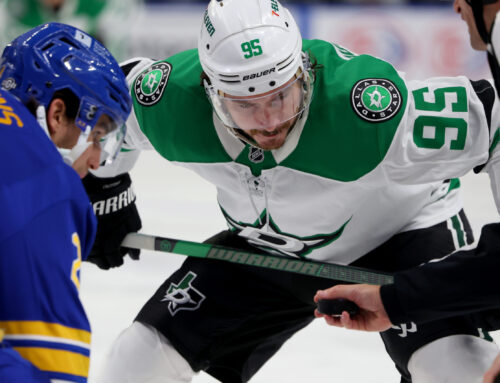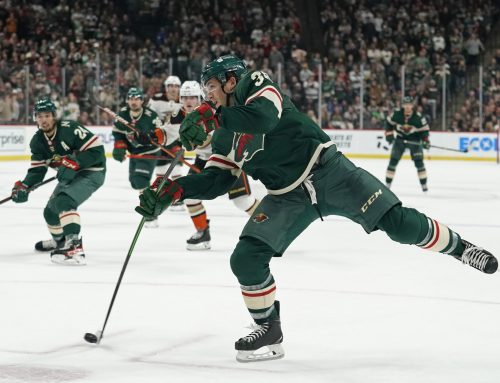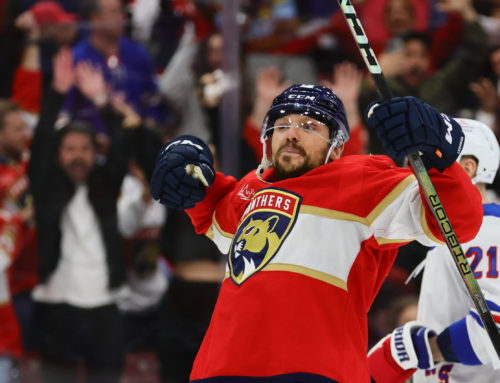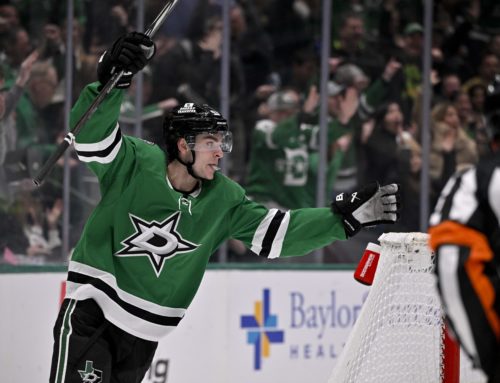Today I'll be using Frozen Tools to determine the top line combinations from last season. To find this information, click More Stats to show the full grid of buttons (if needed), then under the Production heading select Top EV Line (for even-strength production) or Top PP Line (for power-play production).
Top Forward Lines by Production
| Line Combination | Team | POS | GF | GA |
| JOE PAVELSKI – ROOPE HINTZ – JASON ROBERTSON | DAL | F | 58 | 24 |
| JEFF SKINNER – ALEX TUCH – TAGE THOMPSON | BUF | F | 43 | 33 |
| NIKITA KUCHEROV – BRAYDEN POINT – BRANDON HAGEL | TB | F | 41 | 34 |
| JORDAN EBERLE – JARED MCCANN – MATTY BENIERS | SEA | F | 41 | 21 |
| JORDAN STAAL – JESPER FAST – JORDAN MARTINOOK | CAR | F | 38 | 27 |
The Joe Pavelski – Roope Hintz – Jason Robertson combination was also the third-ranked line in 2021-22. If you think that having players on the same line should result in consistent point totals, then you're right about two of those three players. Hintz's production grew by just three points (in seven fewer games), while Pavelski's fell by a mere four points.
Robertson was the main mover, as his point total jumped by 20 points (in eight more games). Believe it or not, Robertson's shooting percentage fell by nearly 4% from his 2021-22 number. He took nearly 100 more shots in 2022-23, while he added 25 more assists. Peter DeBoer juggled the lines a bit more during the playoffs, as Robertson seemed to struggle at times. He still finished with 18 points in 19 games during the Stars' run to the Western Conference Final. If Robertson can remain on the same line for most of the season, another 100-point season is entirely possible.
The fact that these lines aren't star-laden beyond maybe the third group suggests that many teams juggled their line combinations through the season, whether by injury or simply trying to find the right chemistry. The fifth-ranked line combination of Jordan Staal, Jesper Fast, and Jordan Martinook seems especially surprising, considering that the unit is not necessarily considered a scoring line. Yet this trio remained together two-thirds of the time. It may explain why both Staal and Fast were re-signed in the offseason even though both were headed to unrestricted free agency.
Top Defense Pairings by Production
| Line Combination | Team | GF | GA |
| ADAM LARSSON – VINCE DUNN | SEA | 88 | 67 |
| DOUGIE HAMILTON – JONAS SIEGENTHALER | NJ | 66 | 38 |
| BRENT BURNS – JACCOB SLAVIN | CAR | 64 | 47 |
| DREW DOUGHTY – MIKEY ANDERSON | L.A | 64 | 46 |
| BRADY SKJEI – BRETT PESCE | CAR | 60 | 55 |
The Adam Larsson/Vince Dunn pair was on the ice for only 25 goals in 2021-22, so this represents a major jump. However, they were only a combination for 45% of the time that season. Given how far ahead they are from the rest of the group, they should remain a pair as long as possible, similar to the 83.5% of even-strength time they logged together in 2022-23.
One reason that the Dallas/Seattle second-round series was entertaining was that the Dallas top line would have been often facing this pair. Robertson was held without a goal during the entire seven-game series, although he registered five assists (all from Games 4-6). Dunn and Larsson seem to work well together because Larsson remains as the stay-at-home option, which allows Dunn to be more offensively focused. With the possible exception of Brady Skjei and Brett Pesce, the defensemen on the remaining pairs seem to hold these clear designations.
Top Power Play Line Combinations by Production
| Line Combination | Team | POS | GF | GA |
| RYAN NUGENT-HOPKINS – ZACH HYMAN – LEON DRAISAITL – CONNOR MCDAVID | EDM | F | 69 | 4 |
| JOE PAVELSKI – JAMIE BENN – ROOPE HINTZ – JASON ROBERTSON | DAL | F | 46 | 2 |
| MATS ZUCCARELLO – JOEL ERIKSSON EK – MATT BOLDY – KIRILL KAPRIZOV | MIN | F | 38 | 1 |
| JOHN TAVARES – WILLIAM NYLANDER – MITCHELL MARNER – AUSTON MATTHEWS | TOR | F | 36 | 3 |
| EVGENI MALKIN – SIDNEY CROSBY – RICKARD RAKELL – JAKE GUENTZEL | PIT | F | 34 | 1 |
No surprise here that the Edmonton first-unit power play is far and away the top power-play combination. The unit that featured Connor McDavid, Leon Draisaitl, Zach Hyman, and Ryan Nugent-Hopkins scored at a 32.4% rate on the man advantage, which worked out to nearly once every three tries. To compare, the next-highest team (Toronto) was successful on 26.0% of power plays.
The Oilers scored a total of 89 power-play goals, which worked out to just over a power-play goal per game. If an opponent took three penalties per game, then the Oilers would score on one of those power plays. The next-highest team (Ottawa) scored 72 power-play goals. That doesn't mean you'd receive at least a power-play point from any of those four options, but they were as good as anybody for power-play points.
McDavid and Draisaitl should continue to produce at a staggering pace, but what about Nugent-Hopkins and Hyman? Nugent-Hopkins hit 104 points in 2022-23 seemingly out of nowhere, which had a lot to do with his power-play point totals. He finished with 53 PPP, which was third in NHL. You can probably guess who 1 and 2 were. At even-strength, RNH finished barely in the top 50. An 18.4 SH% is one reason he'll likely regress, and so are the 3.8 PTS/60 and 58.2 Sec. Asst%. The power-play point total should keep him afloat. Hyman wasn't as reliant on power-play point totals (26 PPP), and he also managed to up his shot total, so a regression from him shouldn't be as pronounced.
On a side note, the dilemma remains as to whether to use McDavid and Draisaitl together. As a duo, they are a two-man wrecking crew for the Oilers with a 4.45 GF/60 at even strength over the past three seasons. In comparison, McDavid scores "only" 3.16 GF/60 by himself, and Draisaitl has 2.9 GF/60 by himself over that same span. (Stats from The Athletic). Yet if they remain together at even strength for too long, the Oilers' secondary scoring suffers. They are then split up. Then when the Oilers need to reignite their scoring or need a third-period push, they are reunited.
Back to power-play combinations, where the Dallas group was second-best with Jamie Benn. Keeping this group together at evens and on the power play seemed to do the trick for the Stars, although keeping all the top scorers on one line could make it easier for an opponent to game plan around if they have a specific matchup pair or group.
–





 EDM
EDM FLA
FLA DAL
DAL CHI
CHI OTT
OTT STL
STL L.A
L.A ANA
ANA CBJ
CBJ PIT
PIT
